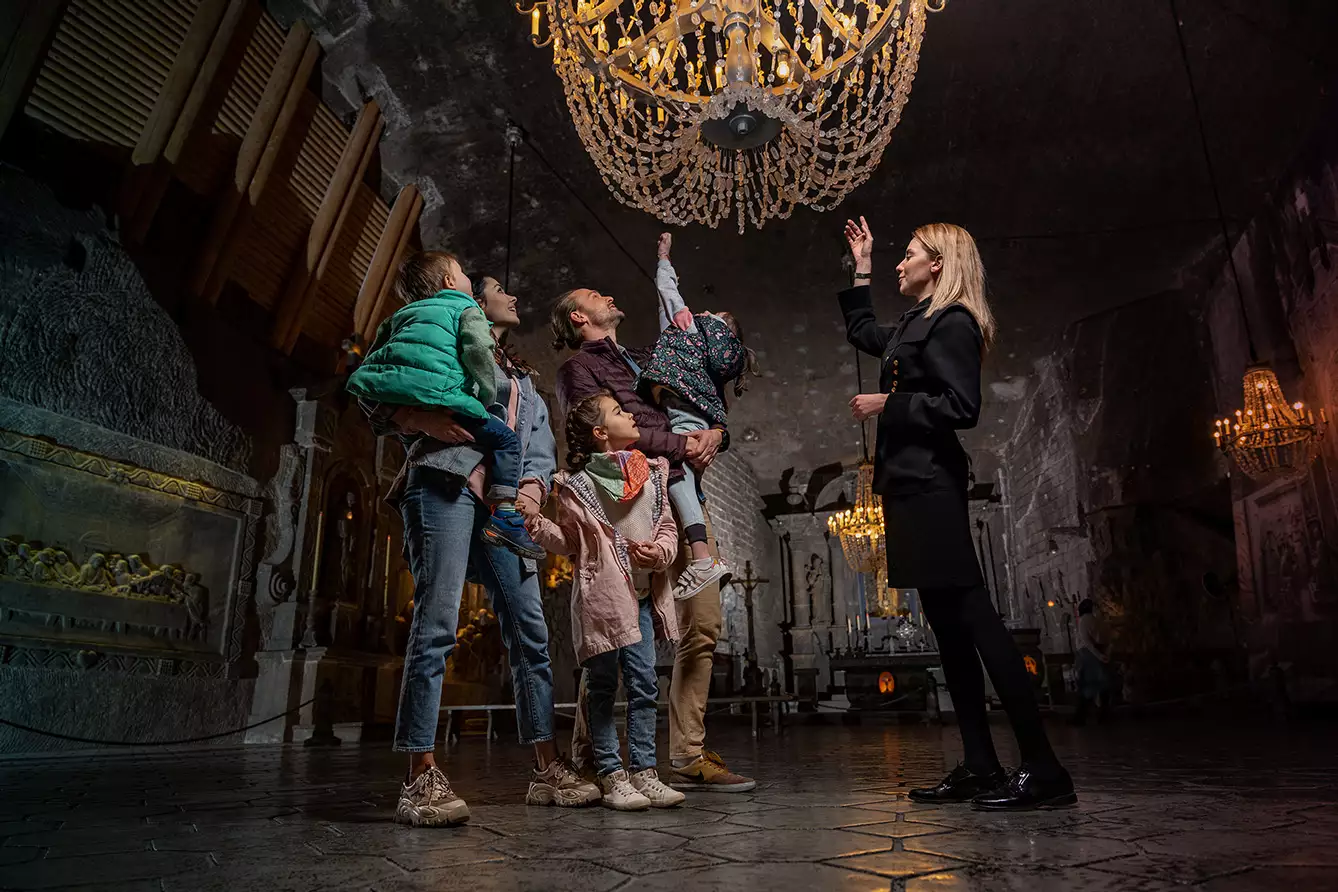This is possibly the most Polish of all legends. It involves a saint, a king, some natural wonders, and the unimaginable abundance of the earth. And then, of course, there is material proof that these events all happened. Today that even includes an underground hostel you can actually spend the night in.
Wieliczka: a legendary salt mine
Located conveniently south of Krakow, the ground in Wieliczka hides salt remaining from a sea that used to cover the land here some 14 million years ago. As far back as three thousand years ago, neolithic tribes would mine salt in this location by boiling saline water. Alas, its sources were seemingly depleted by the 12th or 13th century, spurring legends that endure until today.
The most prevalent legend involves St. Kinga, who married Polish Prince Bolesław the Chaste. Kinga, a princess from Hungary, asked her father for some salt to bring her new subjects as a wedding gift as it was a highly precious commodity. Her father took her to a Hungarian salt mine, where she dropped her ring in a shaft and left for Krakow. As legend tells it, upon her arrival, she told miners where to dig for salt. They hit upon a rock of salt, and when they split it in two, they discovered her ring inside. Princess Kinga became the patron saint of salt miners all around Poland.
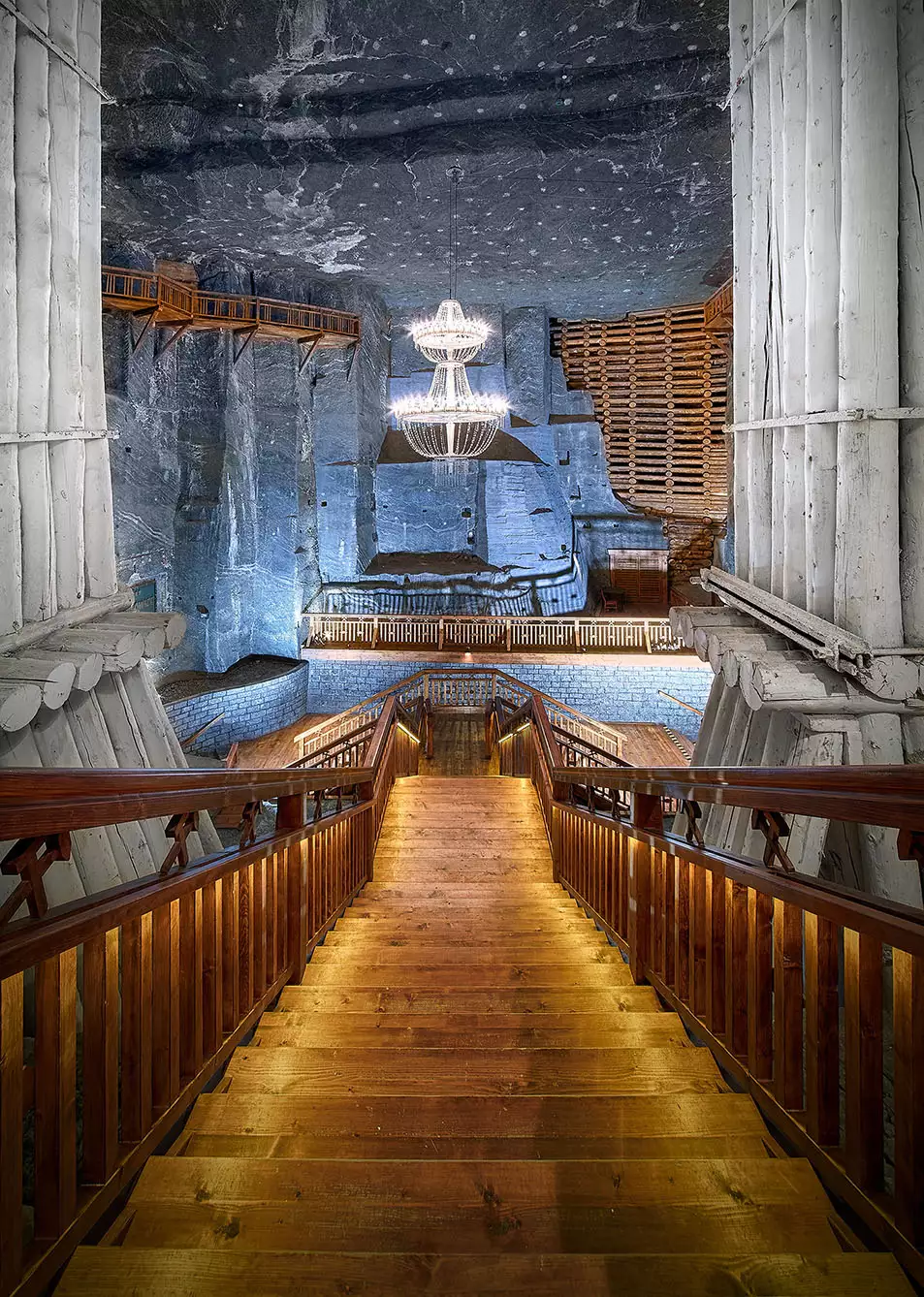
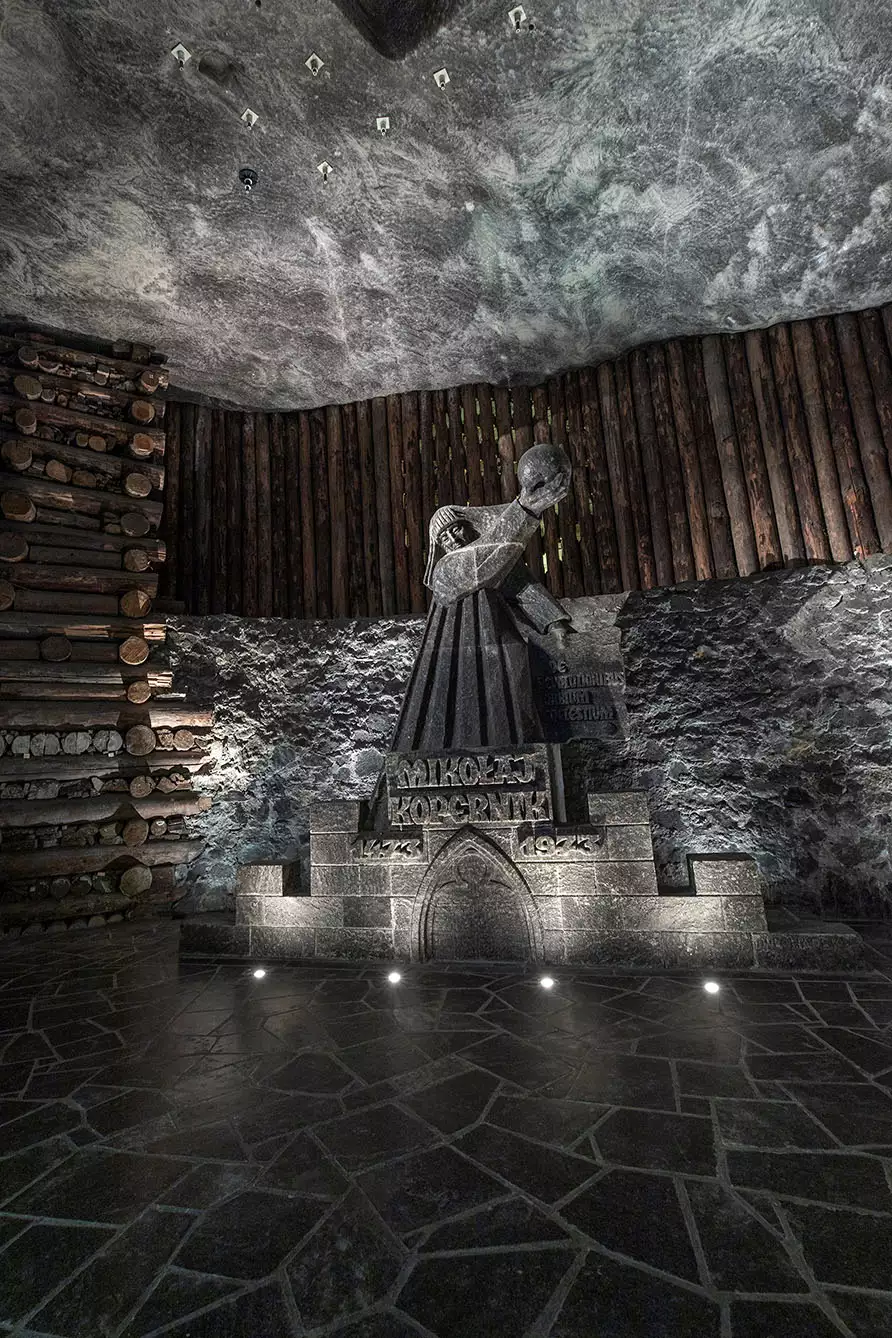
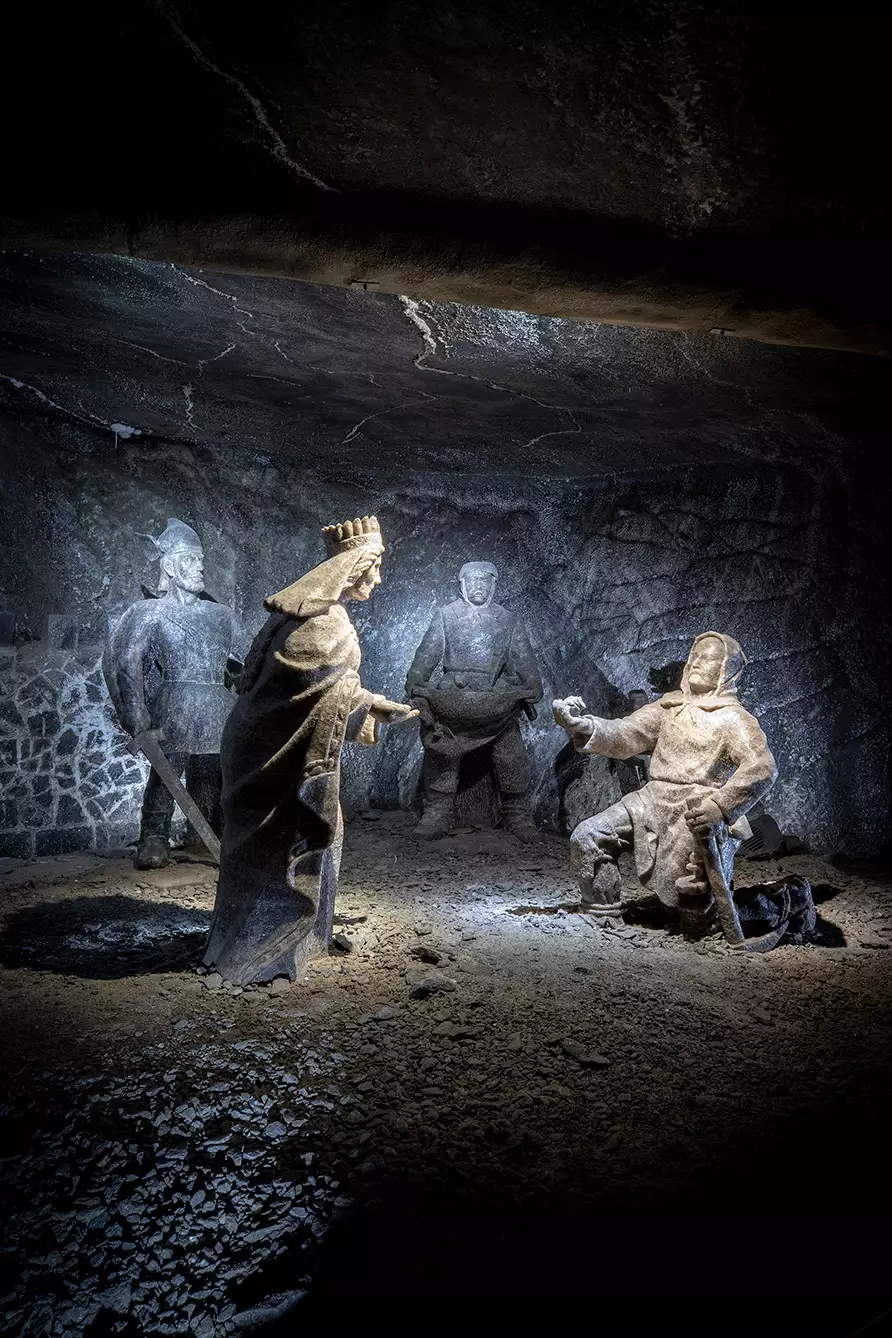

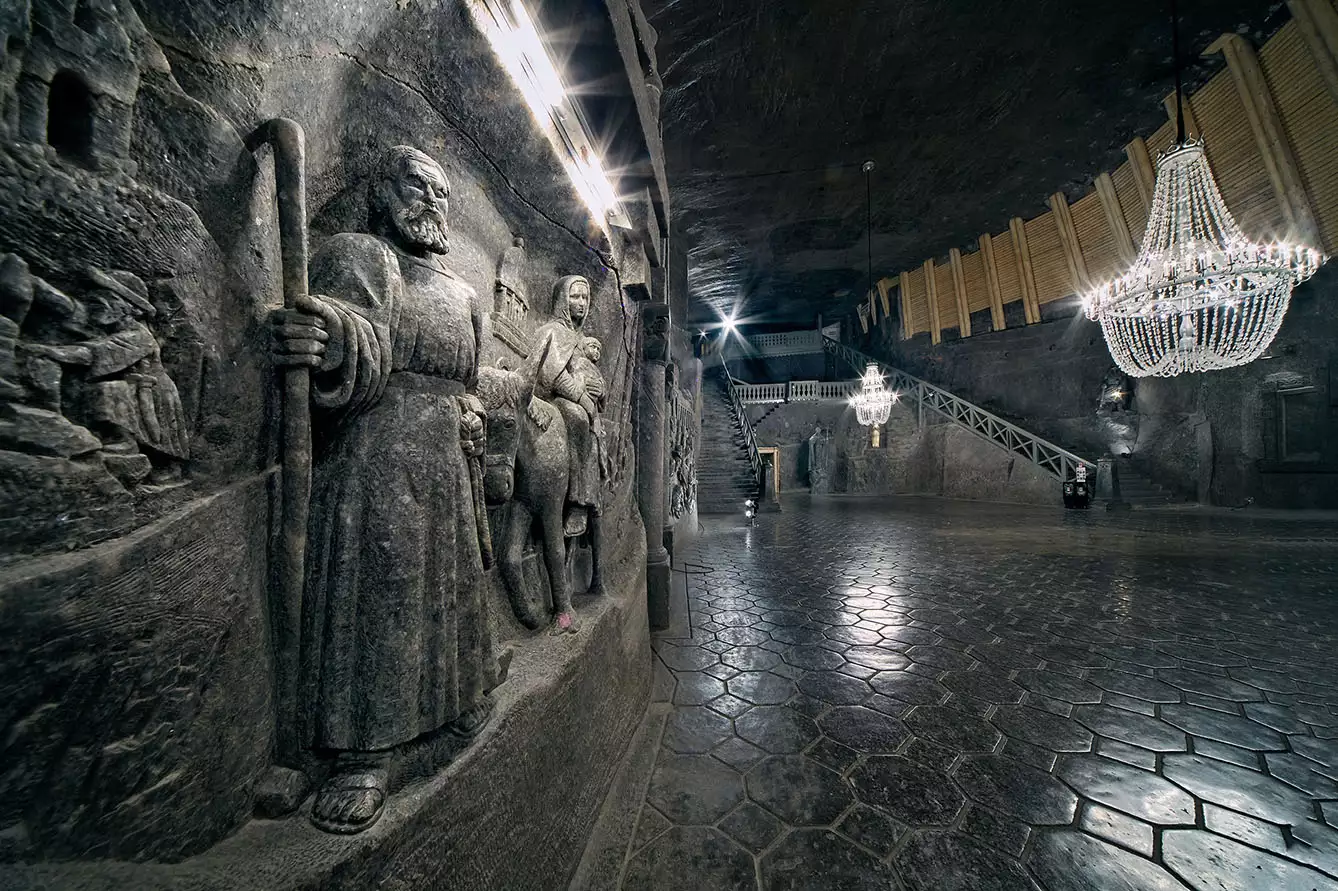
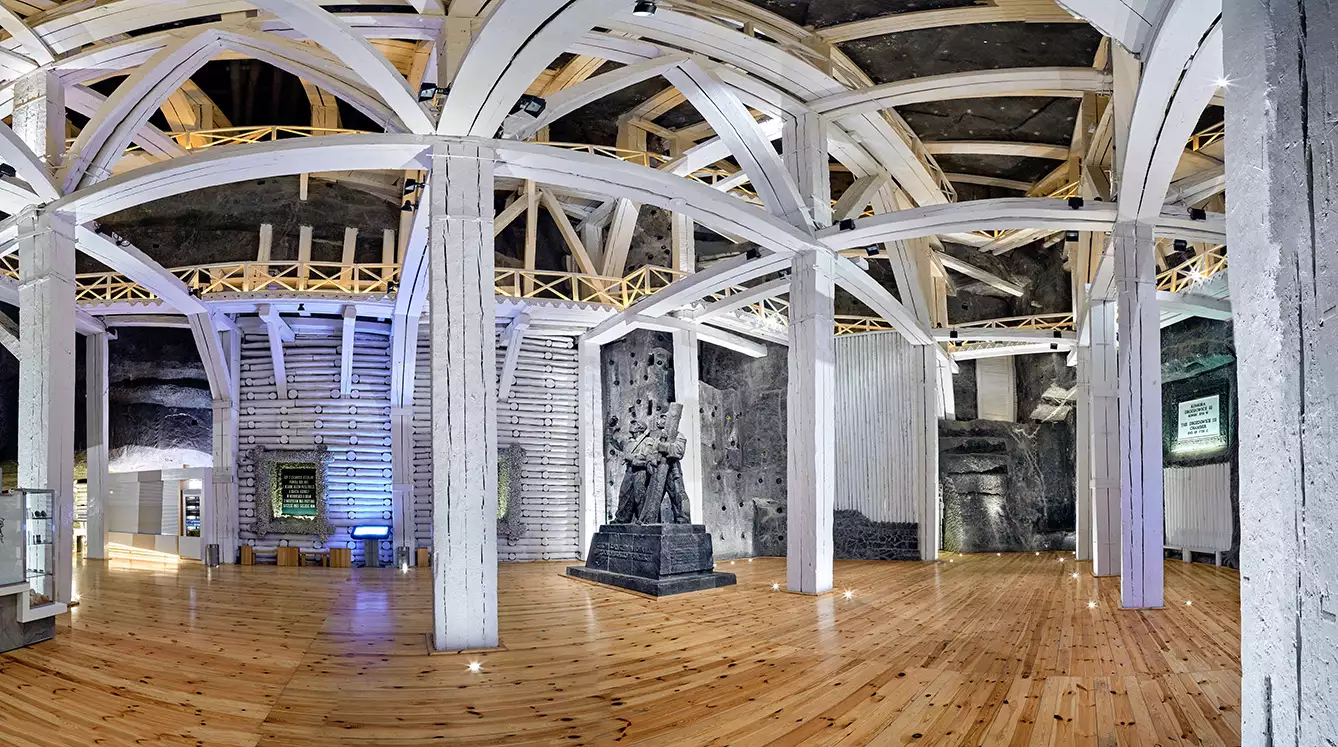
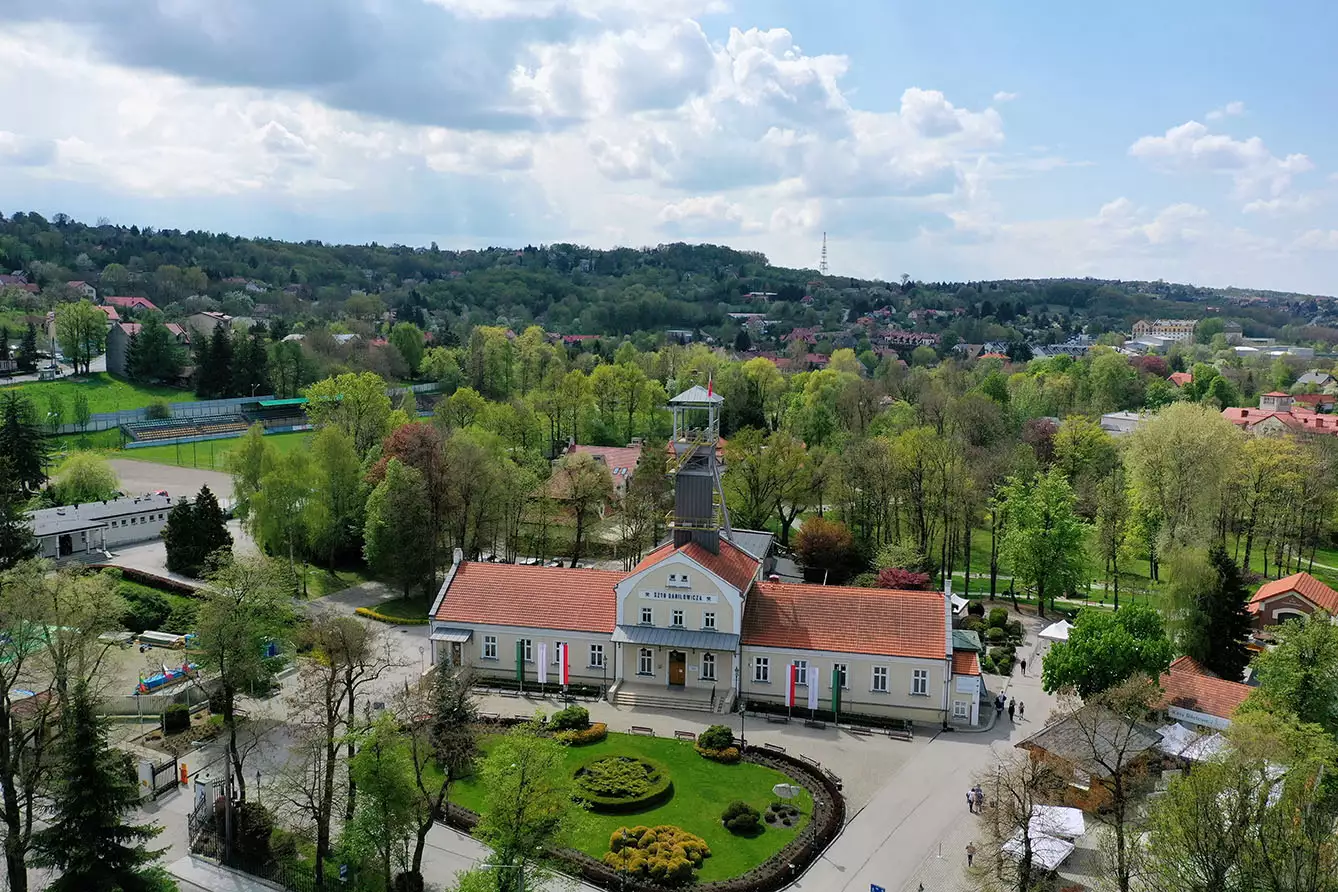
The Wieliczka salt mine was active until the mid-1990s – that’s how far the legend endured. During the centuries it operated, the Wieliczka salt mine was one of the biggest enterprises in the Kingdom of Poland. It was even complete with social services for miners such as barbers and even a hospital.
Underground hostel? Head to Wieliczka
People still flock to the site, with its centuries of history and folklore. In fact, there are more tourists than ever, with one million tourists annually exploring its underground marvels throughout the last decade. And there’s a lot to be seen.
To name a few: there’s a baroque chapel with a ceiling over five meters high; then there’s St. Kinga’s chapel, some 50 meters long and located no less than 101 meters underground. There’s a rehabilitation facility to treat pulmonary diseases at 135 below ground level and a 50-meter-high chamber where the Nazis, incidentally, planned to run a plane assembly line.
And there are dozens of chambers, each with its unique marvels, along the 3-km trail of underground visit. Technically you can get a three-hour tour, but you can also spend a night underground. Located 125 meters underground, the hostel offers a cozy place to stay, with dinner and breakfast included. The temperature inside is a healthy 17 degrees. “Check out how deep sleep can be,” the mine tempts its visitors.


